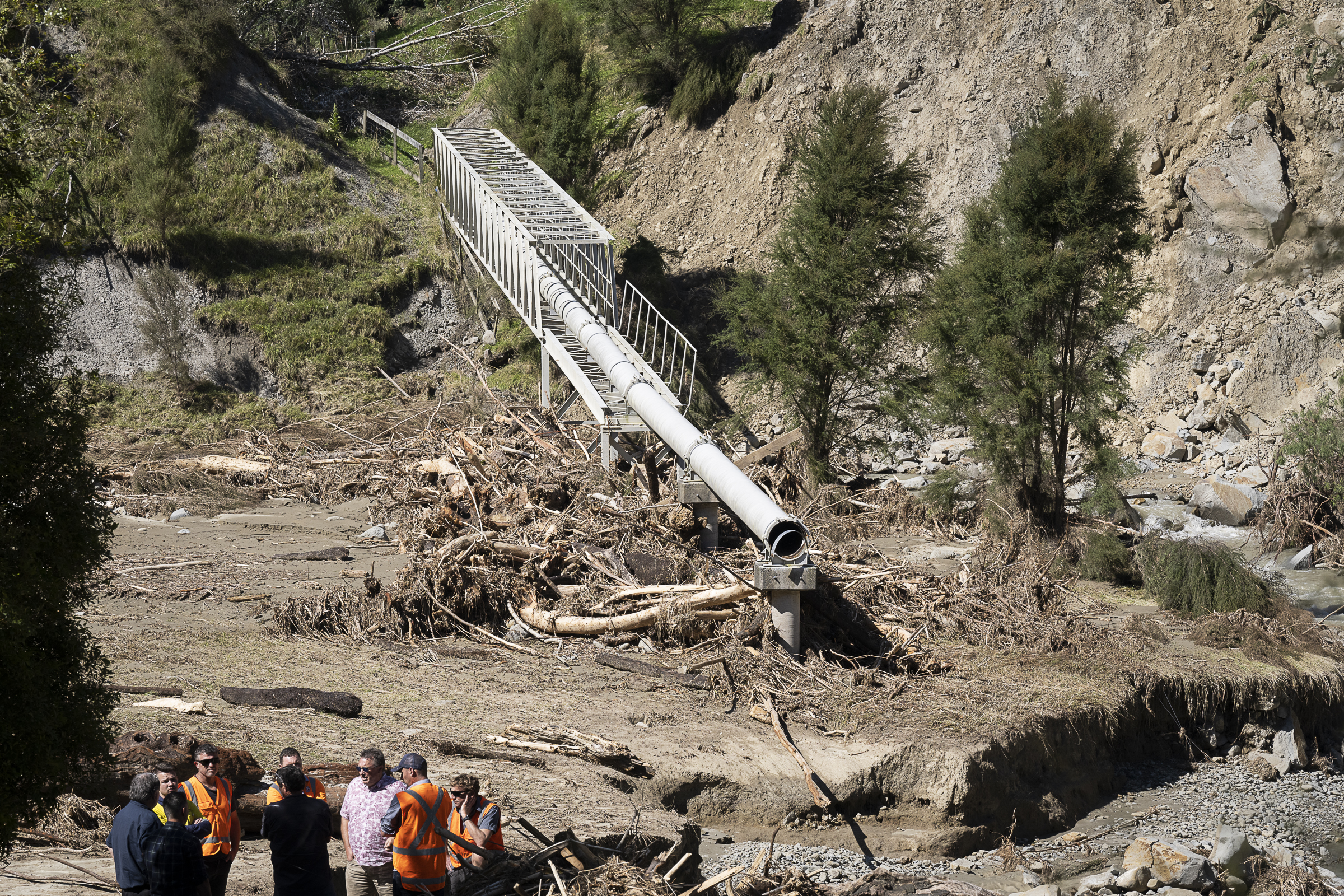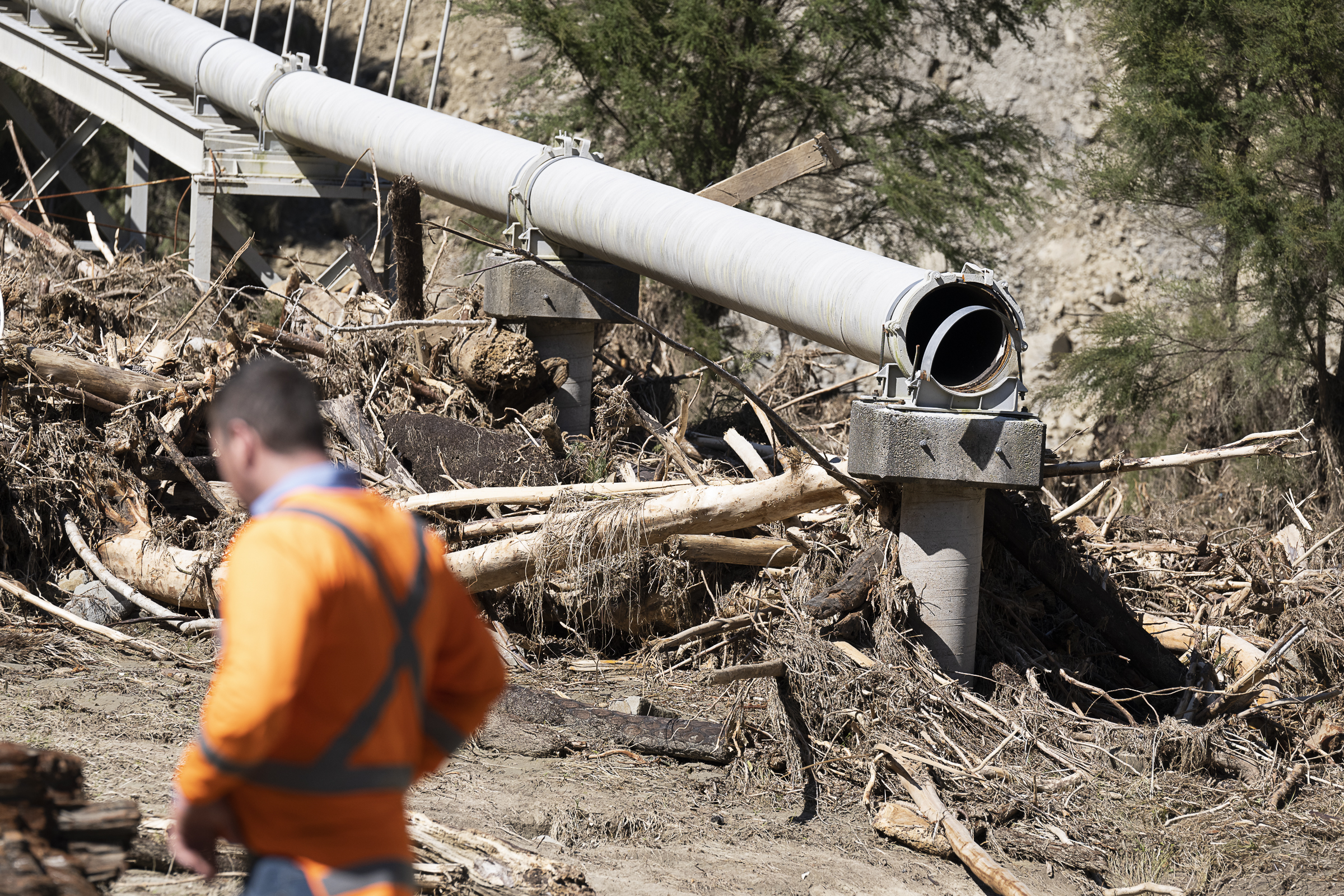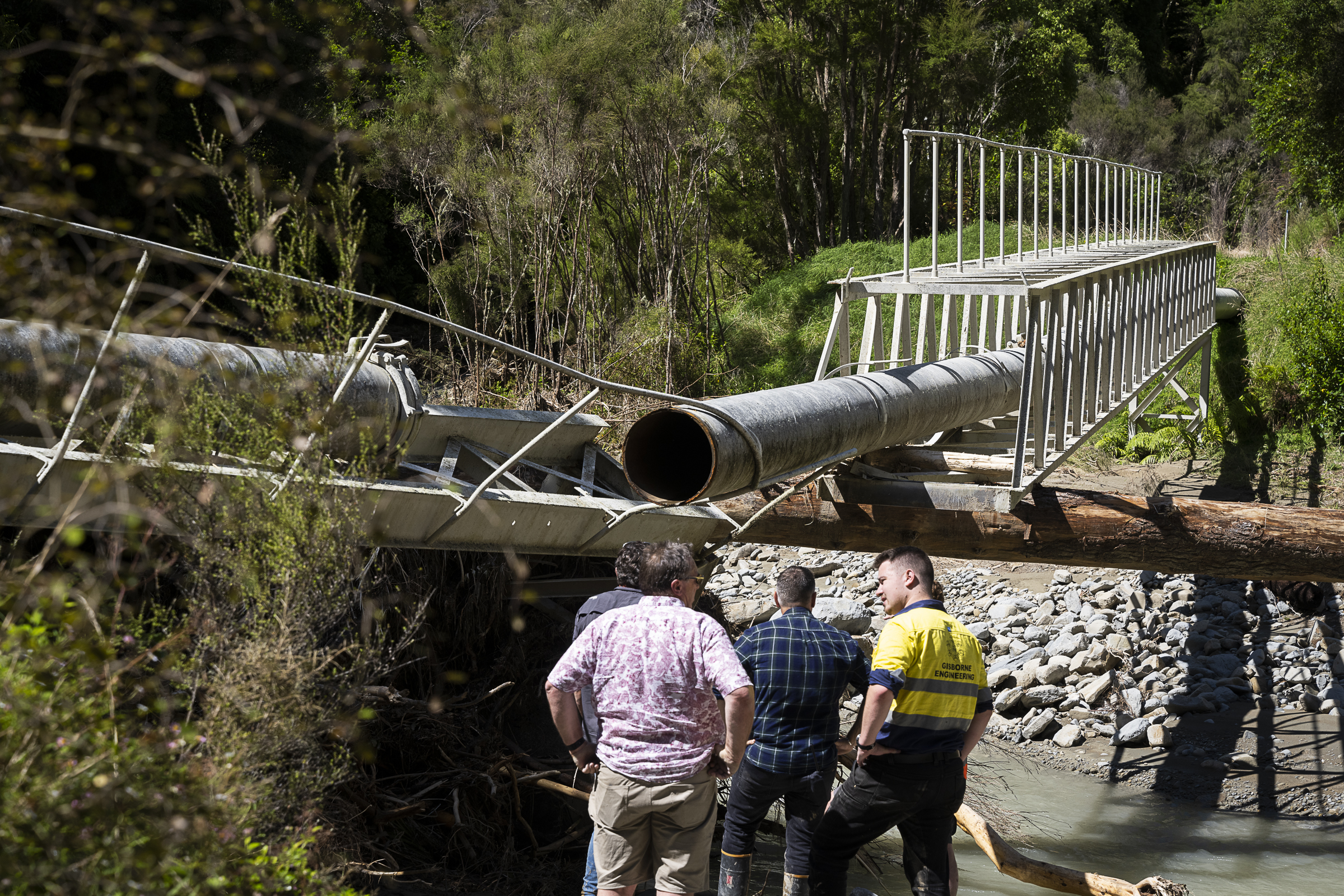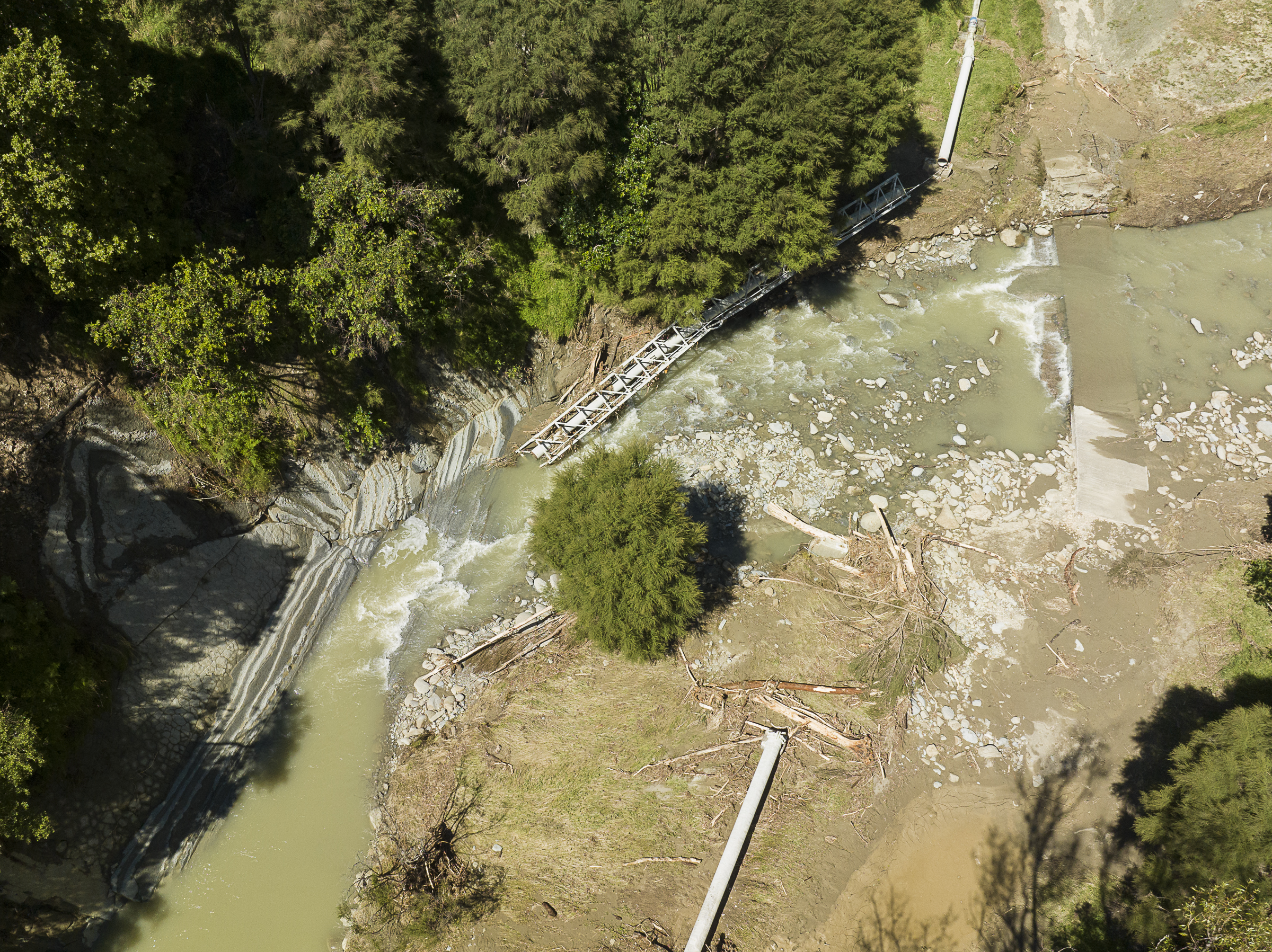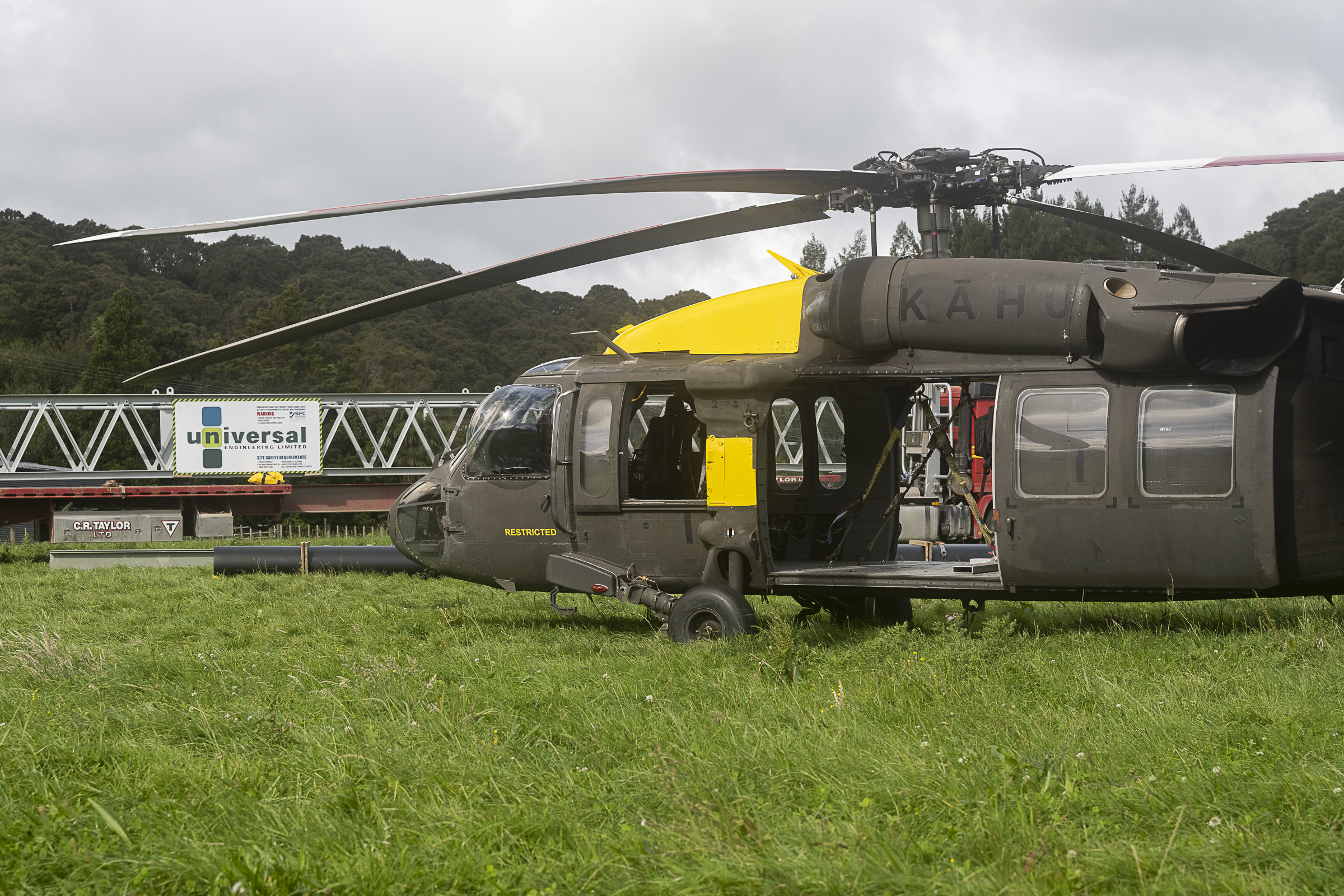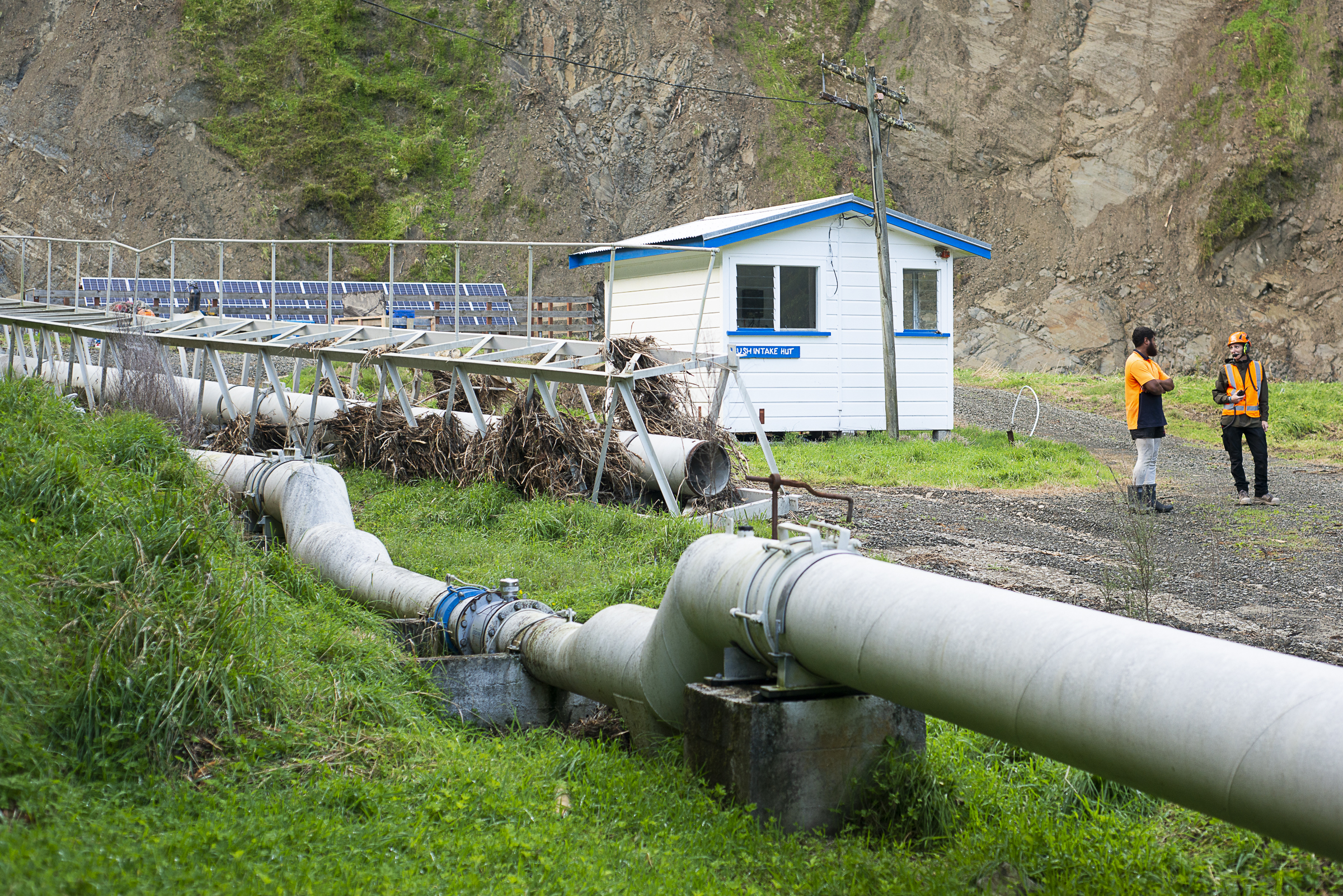Two of the 3 Waingake Mangapoike dams are still full of silt as a result of Cyclone Gabrielle and too dirty to treat until the silt settles out.
The water being supplied to the city and connected communities is from the Waipaoa River and the Waingake - Te Arai River blended with a small volume off the murky Clapcott dam.
The supply from Waingake is limited by the river flow - it relies on good weather to keep turbidity low for the water treatment process. Without rain, the river flow will reduce and less water will be available.
To unlock the water stored in the Waingake Mangapoike dams, work starts to install pre-treatment filters at the Waingake water treatment plant. The new filters will be in use by Christmas.
The project cost is $5.5M and is essential to accessing the water needed for summer.
The filters will remove the silt from the water and future-proof Gisborne’s water supply for scenarios of this nature in the years to come.
This will help restore the Waingake water treatment plant back to pre-cyclone flows.
Please conserve water at all times
There are currently no restrictions in place. But once this project is underway sprinkler restrictions will be needed to help reduce water demand due to the limited river sources. These sources are also impacted by rain and may get too dirty to treat at high volumes.
Pipeline repair timeline, from the impact of Cyclone Gabrielle
Gisborne city's water is supplied from 2 main water catchments, the Mangapoike dams (Williams, Clapcott and Sang) and the Te Arai Bush Catchment. The untreated water from these sources is treated at the Waingake Water Treatment Plant, before travelling a 30km pipeline to the city's reservoirs and reticulation network before being delivered to your tap.
The damage and timeline
The 40km pipe network includes 10km of pipe carrying untreated water and 21water pipe bridges - 9 were damaged or destroyed with sections of the pipe severely damaged.
13 February - multiple breaks discovered in the main water supply pipeline from the dams to the water treatment plant. Waited for a team to assess the damage by helicopter, as soon as the weather cleared.
14 February - city residents advised to restrict water use to emergency use only as major breaks in the network were discovered. Plans were being worked on but it was not going to be a quick fix.
15 February - significant water crisis. All city residents and industries advised to reduce water use. The situation was critical as the taps would run dry. Water was being treated at the Waipaoa Water Treatment Plant from the Waipaoa River, but there were issues with the plant and not being able to keep up with water demand.
17 February - major water crisis - the Waipaoa Water Treatment Plant failed with no water getting to the city's reservoirs. Water users advised to reduce water use with major restrictions put in place for businesses and industries to avoid the taps running dry.
Residents were only to use water for drinking, short showers and food preparation until the issues at the Waipaoa Water Treatment Plant were resolved.
Staff were finally able to walk the Waingake track to assess the damage to the water supply pipeline.
27 February - good progress was made by local contractors on the fabrication of new pipe bridges.
2 March - A huge effort by staff and local experts working together to repair the pipeline. A Black Hawk helicopter transported 2 new pipe bridges to the Bush Intake Road - in the most remote area of the Mangapoike dams.
With no vehicle access available, people and equipment had to be flown in. The concrete was mixed and poured by helicopter. The Black Hawke helicopter could handle and manoeuvre the weight and size of the pipe bridges.
45 days to repair and reconnect!
30 March - a massive effort by staff and contractors who worked tirelessly to repair the pipeline and get the water flowing from Waingake to blend with Waipaoa.
A move to Level 4 water restrictions meant businesses and industries could operate with restrictions on outdoor water use.
With so much silt in the Waingake Mangapoike dams, the water cannot be treated until the silt settles out. This will take some time.
6 April - not entirely back to normal but moved to Level 3 water restrictions. Industries able to operate and outdoor water use limited to handheld hosing only, no sprinklers.
8 May - moved to level 1 - no water restrictions. The water is still supplied from Te Arai River and Waipaoa River.
Water supply and demand
In summer, the peak demand the city uses is up to 30,000m3 a day. The Waingake Water Treatment Plant can produce this but the water is usually supplemented by Waipaoa so Waingake isn’t ‘sprinting’ all the time.
Waingake Treatment Plant usually produces 35,000m³ each day and the Waipaoa Water Treatment Plant produces 15,000m³.
Usual demand would be 18,000 to 22,000m³ and Waingake would produce 2 thirds of this and Waipaoa would produce a third.
We normally use about 30,000m³ of water each day – the average dropped to 18,000m³
At the time of the major break, the daily production dropped initially to less than 6,000m³.
The lowest production day of 4,000m³ was day 4 after Gabrielle, when we had significant issues at the plant.
Our reservoirs dropped to 36% full (16,000m3). By day 6 we were producing between 10,000 and 11,000m³ per day and recovered the reservoir level and managed the demand to keep the reservoirs around 75% full.
With people conserving water and the restrictions in place, we dropped our water use on the lowest day it was around 6,600m³.
Once we started allocating water to business the demand slowly increased.
Early April we used 13,7000m³ just over twice as much as our lowest demand day near the beginning.
We store 38,300m³ of water in our reservoirs, this is approximately 3 days of supply dependent of demand. We can store 45,000m3 in our reservoirs.
Approximately 100km of the total 285km of water pipe network was damaged during Cyclone Gabrielle.
Infographic of water pipeline breaks and fixes

City water supply Q&As
The likely cause of this is iron from the water we’re using to treat at present.
Iron is not unsafe to drink but it may make your food and beverages taste metallic and stain your dishes and laundry.
The water leaving the treatment plant is safe to drink.
There is naturally occurring iron in the Waipaoa River source water. This is being seen at some connections as a brown colour that may come and go.
Importantly, if you see actual settled out silt in the water, please contact our customer service team.
Iron is an Aesthetic Value in the NZ Drinking Water Standards. Aesthetic Values specify or provide minimum or maximum values for substances and other characteristics that relate to the acceptability of drinking water to consumers (such as appearance, taste, or odour).
The Aesthetic Value for Iron is less than or equal to 0.3 mg/l.
We expect test results in a few days, this will show what the treated water iron levels are.
The water supplied from the Waingake water catchment (Mangapoike dams) can be described as 'soft water'.
The water supplemented from the Waipaoa River to the council supplied water can be described as 'hard water'.
Soft water has less calcium and magnesium, while hard water has high calcium and magnesium.
The difference between hard and soft water
